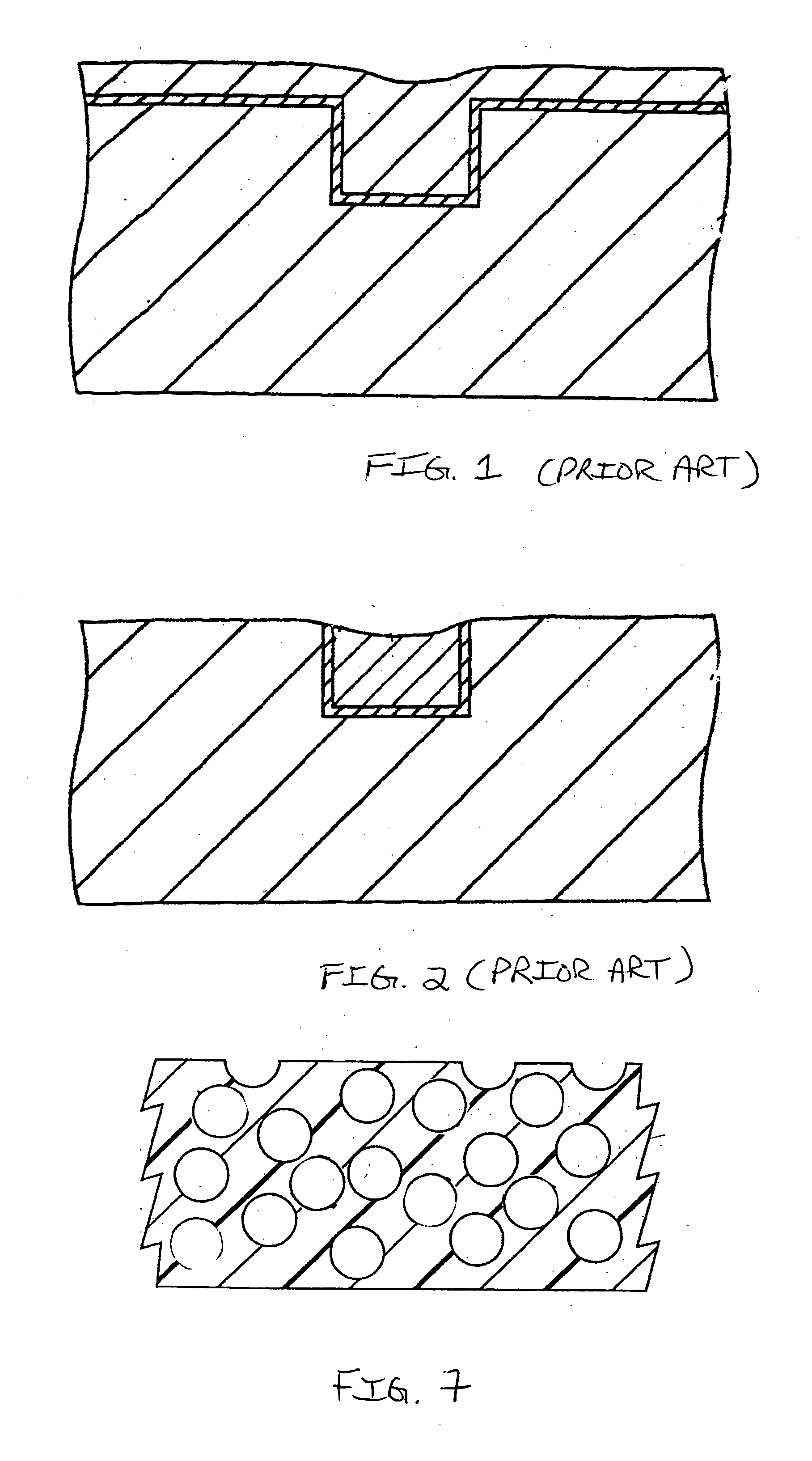Polishing pad and method of making same
a technology of polishing pads and polishing materials, which is applied in the direction of manufacturing tools, grinding devices, lapping machines, etc., can solve the problems of excessive diffusion barrier and metallization materials, process performance drift, and inability to fabricate further metallization layers, so as to control the size and uniformity of the cells contained, and control the uniformity and microcellular size of the pads. , to achieve the effect of facilitating end point detection and ensuring the uniformity of the surface area
- Summary
- Abstract
- Description
- Claims
- Application Information
AI Technical Summary
Benefits of technology
Problems solved by technology
Method used
Image
Examples
example 1
[0070] The apparatus as described in the attached FIGS. 3 and 4 was used in conjunction with an unaltered elastomeric polyurethane system supplied by Bayer, namely Bayflex XGT-140 which comprises a two component system. The equipment used was a 500 pound / min cylinder machine. The standard urethane supplier recommended process parameters were utilized for this example and include:
Material Temperature 90-100 F.Mold Temperature140-158 F.Polyol Nucleation0.75-0.80Maximum Shot Time11-12 secTypical Demold Time 2-3 minIso / Polyol Volume Mixing Ration137:100
[0071] A closed cellular structured Polishing Pad was fabricated with the techniques and process guidelines as described. The average cell size for the polishing pad was 20 micrometers. Concentric grooves, 30 mil in depth, 62.5 mil wide with a radial density of eight grooves per inch were machined into the polishing surface. The pad was laminated with 3M 442 KW double side adhesive and installed on a commercially available IPEC 472 poli...
PUM
| Property | Measurement | Unit |
|---|---|---|
| diameter | aaaaa | aaaaa |
| diameter | aaaaa | aaaaa |
| particle size | aaaaa | aaaaa |
Abstract
Description
Claims
Application Information
 Login to View More
Login to View More - R&D
- Intellectual Property
- Life Sciences
- Materials
- Tech Scout
- Unparalleled Data Quality
- Higher Quality Content
- 60% Fewer Hallucinations
Browse by: Latest US Patents, China's latest patents, Technical Efficacy Thesaurus, Application Domain, Technology Topic, Popular Technical Reports.
© 2025 PatSnap. All rights reserved.Legal|Privacy policy|Modern Slavery Act Transparency Statement|Sitemap|About US| Contact US: help@patsnap.com



